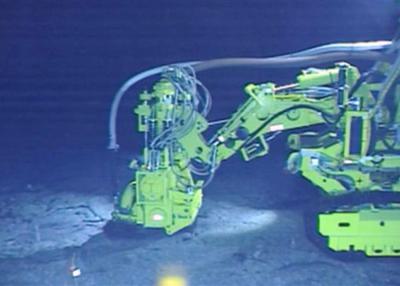Deep-sea mining can spur fish to flee mining sites in large numbers, a new study shows.
For a 2020 test, Japanese mining officials gathered cobalt, a key mineral in EV batteries, from the crust of an undersea mountain in the western Pacific Ocean. Researchers used a remote-controlled vehicle to video the site one month before the mining, one month after, and one year after.
The videos revealed a dramatic decline in fish and shrimp. Between one month and one year after the mining, scientists found a 43 percent drop in the number of fish and shrimp where mining had kicked up sediment. In nearby areas, fish and shrimp dropped 56 percent. The findings were published in the journal Current Biology.
“I had assumed we wouldn’t see any changes because the mining test was so small. They drove the machine for two hours, and the sediment plume only traveled a few hundred meters,” Travis Washburn, an ecologist with the Geological Survey of Japan and lead author of the study, said in a statement. “But it was actually enough to shift things.”
Scientists believe the mining test contaminated sources of food, spurring fish to go elsewhere. “We’ll have to look at this issue on a wider scale, because these results suggest the impact of deep-sea mining could be even bigger than we think,” Washburn said.
This month, the International Seabed Authority is racing to finalize rules governing deep-sea mining in international waters. The organization missed a key deadline, on July 9, to complete the regulations, creating uncertainty as to whether it is legally obligated to process deep-sea mining permits despite having no rules in place.



